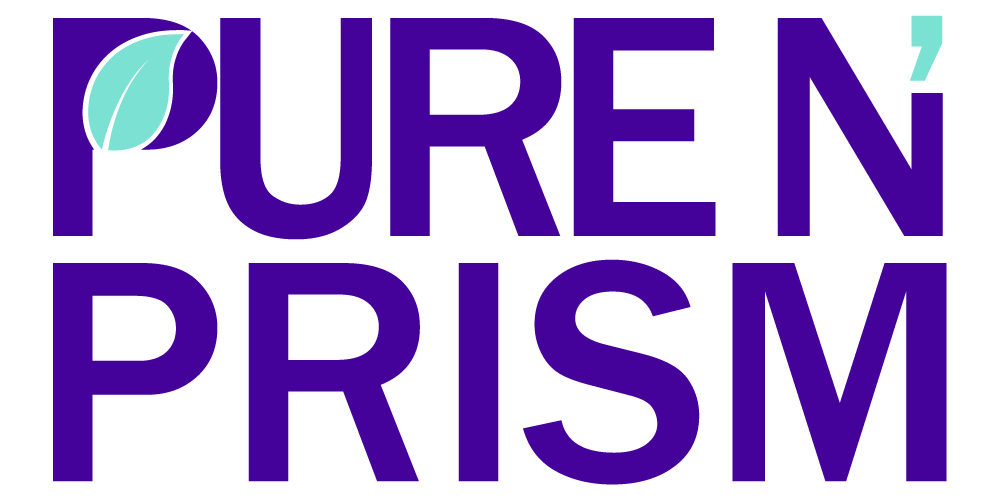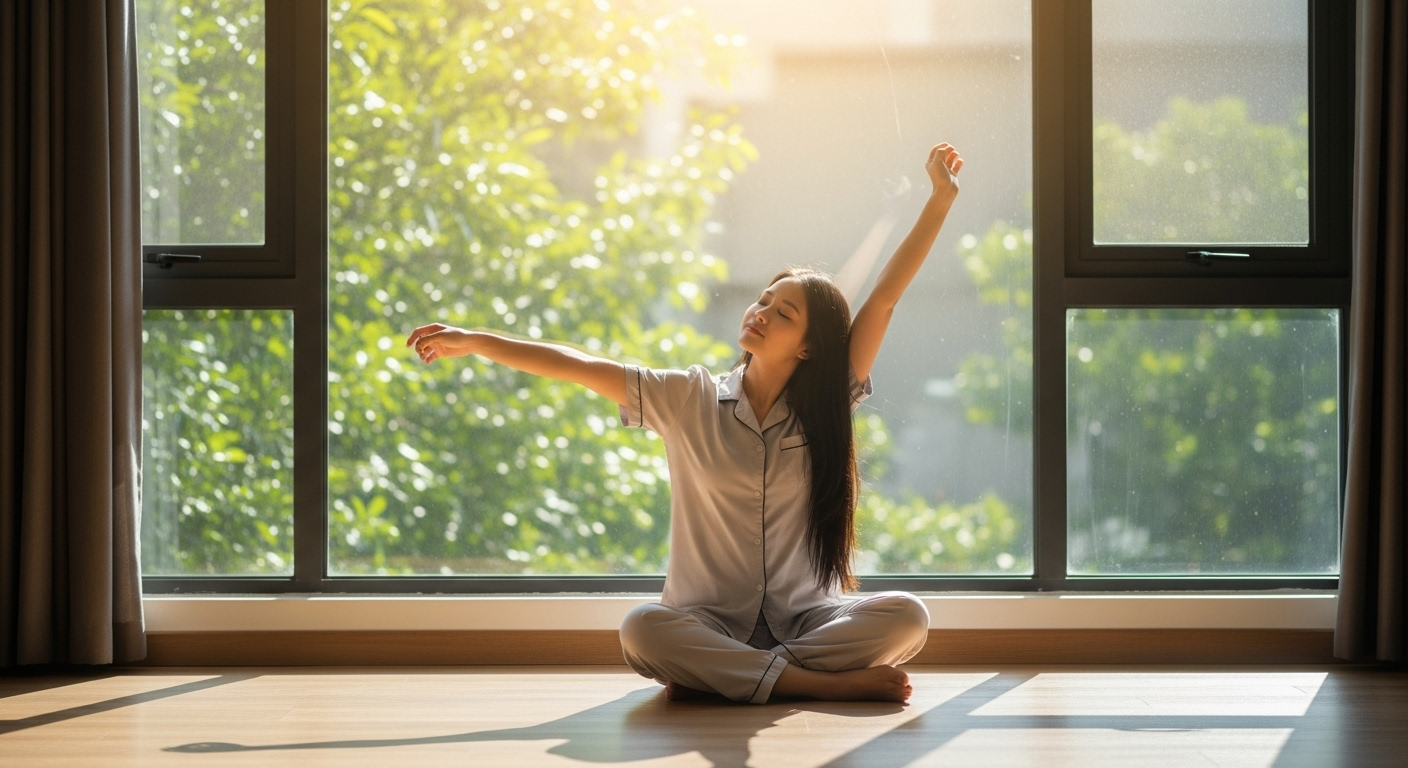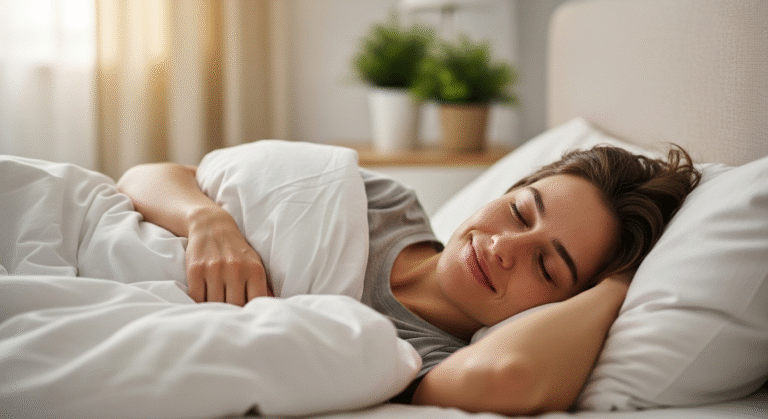Meta Description: Discover the rising eco-friendly sleep trends of bamboo pajamas and mouth taping. Learn benefits, safety tips, and top product recommendations for better sleep naturally.
I’ll be honest—when my friend first told me she’d started taping her mouth shut at night and sleeping in bamboo pajamas, I thought she’d lost her mind. But after months of restless nights and sweaty wake-ups in my old cotton PJs, I was desperate enough to try anything. What I discovered was a whole world of eco-friendly sleep trends that are actually transforming how people rest, and surprisingly, the science is pretty fascinating.
These sustainable sleep practices aren’t just another wellness fad that’ll disappear next month. They’re part of a growing movement toward more conscious, environmentally-friendly choices that happen to make us sleep better too. Let me walk you through what I’ve learned about these game-changing sleep trends and why they might be exactly what your bedtime routine needs.
The Bamboo Pajama Revolution: Why This Fabric Is Taking Over Bedrooms
When I first slipped into my first pair of bamboo pajamas, it felt like wearing a cloud. I’m not exaggerating—the fabric is incredibly soft and smooth against your skin, almost silky but without that slippery feeling that makes you slide around in bed. The lightweight, moisture-wicking fabric is naturally breathable and temperature-regulating, which is ideal for a hot sleeper, and trust me, as someone who used to wake up feeling like I’d run a marathon in my sleep, this was life-changing.
What makes bamboo so special? Unlike traditional cotton, bamboo fibers have natural properties that make them perfect for sleepwear. It has antibacterial, hypoallergenic, breathable, moisture-wicking, thermoregulating, and cooling properties. This means your pajamas actually work harder while you sleep, keeping you comfortable and fresh throughout the night.
For anyone dealing with sensitive skin or allergies, bamboo pajamas are a game-changer. The fabric doesn’t irritate eczema-prone skin, making it gentle enough for even the most sensitive sleepers. I’ve recommended them to friends with skin sensitivities, and they’ve all noticed the difference within their first week of wearing them.
The sustainability factor is what really sold me on making the switch permanently. These silky-soft, breathable garments represent a significant shift toward sustainable fashion that is actively contributing to the fight against climate change. Bamboo grows incredibly fast, requires minimal water, and produces more oxygen than trees. When you’re choosing bamboo pajamas, you’re not just investing in better sleep—you’re making an eco-conscious choice that feels good on multiple levels.
Product Recommendation: I’ve been absolutely loving the Bamboo Pajama Set from Amazon for the past six months. They’re incredibly soft, wash beautifully, and the temperature regulation is noticeable from night one. The price point is reasonable for the quality you get, and they’ve held up perfectly through dozens of washes.
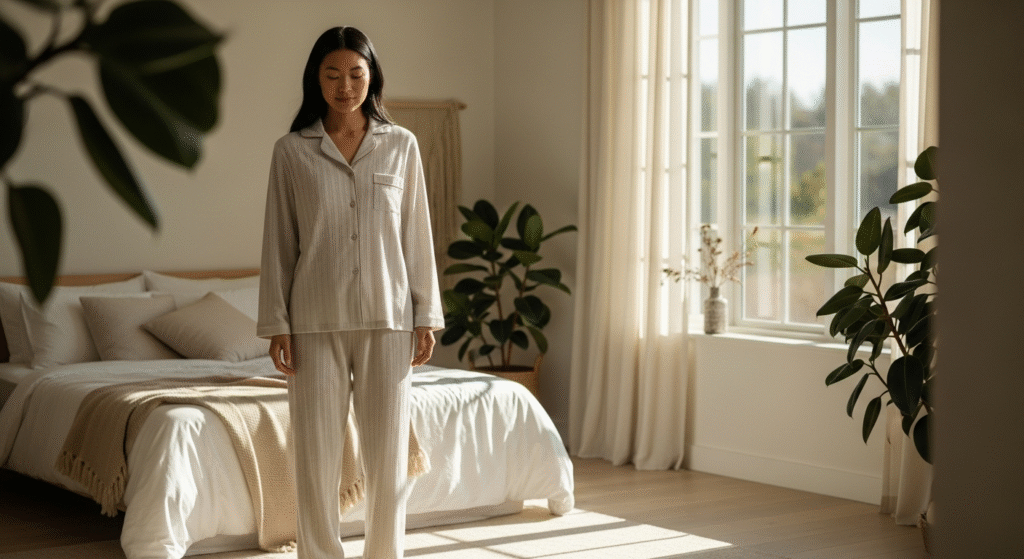
The Science Behind Mouth Taping: Controversial but Potentially Beneficial
Now, let’s talk about the more controversial trend that’s been making waves on social media: mouth taping. I know, I know—it sounds weird and maybe even scary. When I first heard about it, my immediate thought was “absolutely not.” But after doing some research and talking to my healthcare provider, I learned there’s actually some legitimate science behind this practice.
A small preliminary study from 2022 found that mouth taping during sleep may improve symptoms in mouth-breathers with mild obstructive sleep apnea. The basic idea is that when you breathe through your mouth while sleeping, you’re not getting the benefits of nasal breathing, which naturally filters, humidifies, and warms the air before it reaches your lungs.
Here’s what I discovered during my research: nasal breathing promotes better oxygen exchange, helps maintain proper tongue posture, and can reduce snoring. Some people who’ve tried mouth taping report waking up feeling more refreshed and having less dry mouth in the morning. However, the benefits of mouth taping are “mostly anecdotal,” with few studies backing up the benefits.
Safety First: Important Considerations
Before anyone rushes to try this, let me be clear about the safety considerations. There’s not much science to back this up, and it can be risky for some people. If you want to try it, talk to a healthcare provider first. This is especially important if you have any breathing issues, sleep apnea, or nasal congestion.
I personally tried it for a few nights after getting clearance from my doctor, using specially designed sleep tape (not regular tape, which can be dangerous). The experience was… interesting. I did notice less dry mouth in the morning, but it took some getting used to. It’s definitely not for everyone, and the psychological comfort factor is huge—if you feel anxious about it, it’s probably not worth the potential stress.
Product Recommendation: If you’re curious about trying mouth taping safely, the 3M Micropore Tape is what many sleep specialists recommend. It’s gentle on skin, designed for medical use, and removes easily. Always start with small pieces and never use regular household tape.
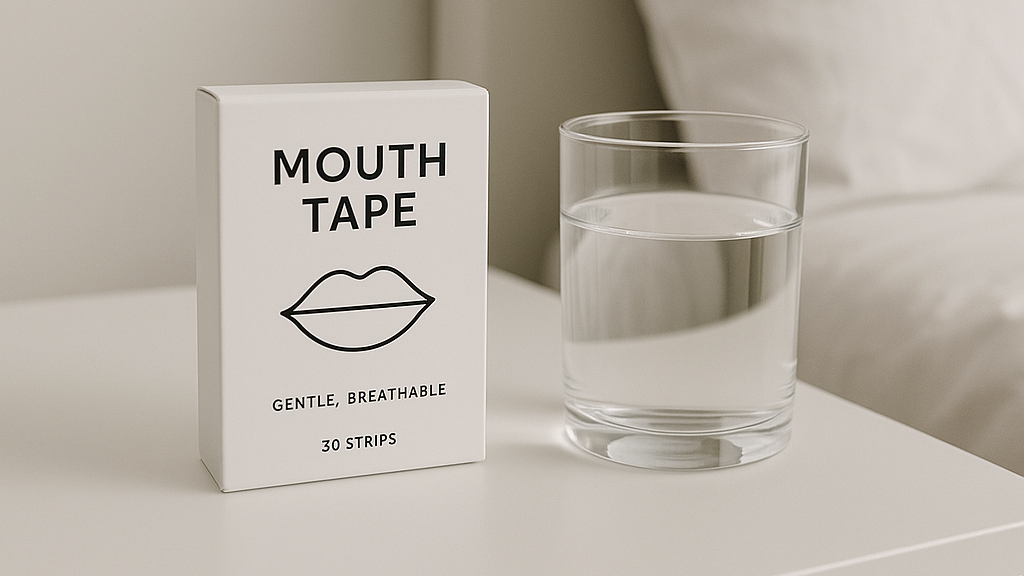
Creating Your Eco-Friendly Sleep Sanctuary
Combining these trends with other sustainable sleep practices can create a truly restorative bedroom environment. I’ve found that pairing bamboo pajamas with other eco-friendly choices like organic cotton sheets, a bamboo pillow, and even some air-purifying plants creates a sleep space that feels both luxurious and environmentally conscious.
The temperature regulation from bamboo sleepwear works particularly well when you’re also focusing on proper sleep hygiene. I keep my bedroom cool, invest in blackout curtains, and limit screen time before bed. The combination of these practices with the natural comfort of bamboo fabric has transformed my sleep quality.
One unexpected benefit I’ve noticed is how much better my skin feels in the morning. The moisture-wicking properties of bamboo pajamas prevent that clammy feeling I used to get with synthetic fabrics, and my skin seems less irritated overall. It’s one of those small changes that creates a ripple effect of improvements.
Product Recommendation: The Bamboo Pillow from Amazon has been the perfect complement to my bamboo pajamas. It’s naturally cooling, hypoallergenic, and provides excellent support. Together with the pajamas, it’s created the most comfortable sleep setup I’ve ever had.
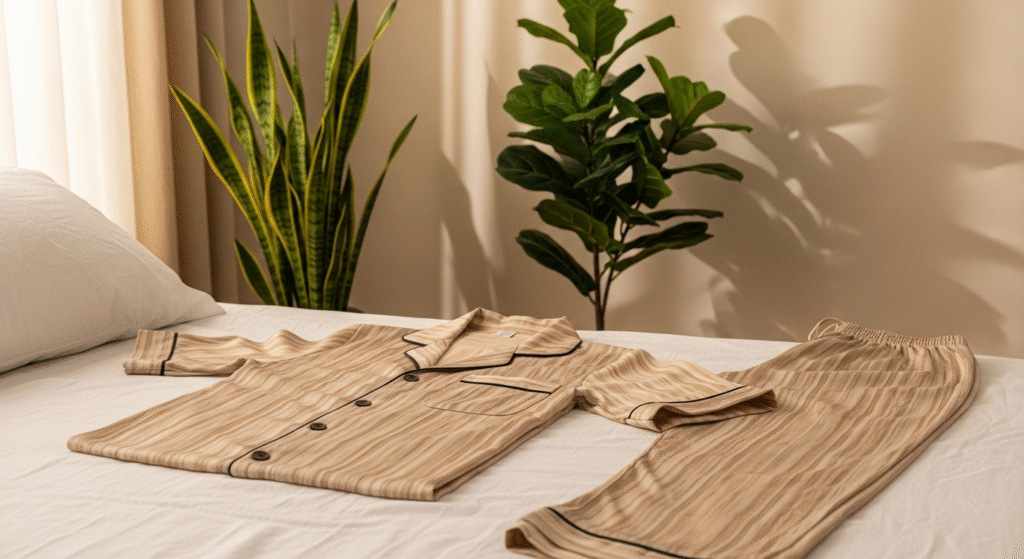
Making the Switch: Practical Tips for Better Sleep
If you’re ready to experiment with these eco-friendly sleep trends, start small. Begin with bamboo pajamas—they’re a low-risk, high-reward investment that you’ll notice immediately. Look for bamboo viscose or bamboo rayon for the softest feel, and don’t be surprised if they become your absolute favorite sleepwear within a week.
For mouth taping, proceed with extreme caution and medical guidance. Start by simply becoming more aware of whether you breathe through your mouth or nose during the day. Practice nasal breathing while awake, and consider addressing any underlying nasal congestion before even thinking about taping.
Remember, the goal is better sleep and reduced environmental impact, not following every trend that pops up on social media. These practices work because they address real physiological needs—temperature regulation, proper breathing, and comfort—while making more sustainable choices.
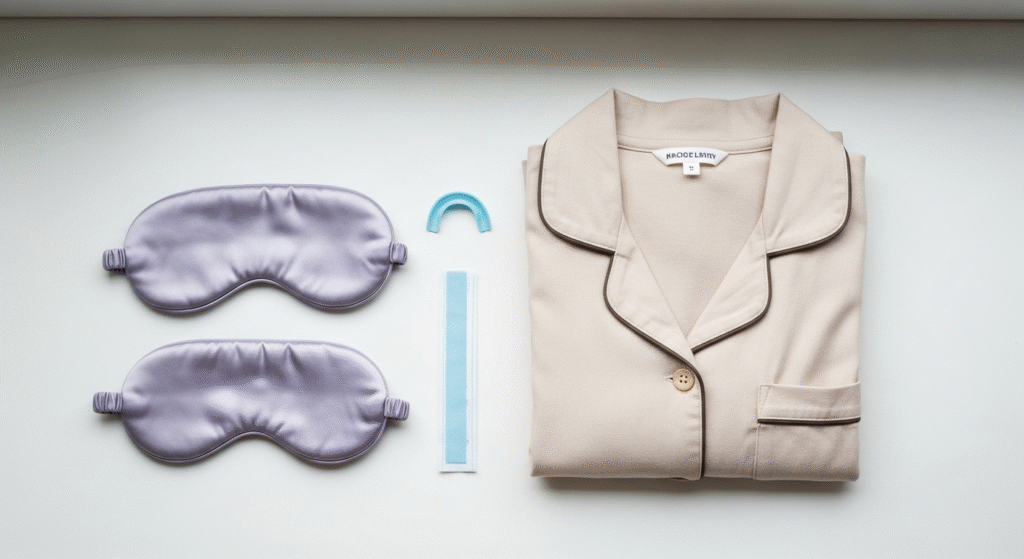
Sweet Dreams and Sustainable Choices
Image Suggestion 5: Place in conclusion section – Peaceful morning scene with someone stretching in bamboo pajamas next to an open window with natural light. Caption: “Wake up refreshed with eco-friendly sleep practices that benefit you and the planet.”
After months of experimenting with these eco-friendly sleep trends, I can honestly say my sleep quality has improved dramatically. The bamboo pajamas are now a non-negotiable part of my bedtime routine—I actually pack them when I travel because regular pajamas just don’t feel right anymore. As for mouth taping, I use it occasionally when I feel congested, but it’s not something I do every night.
What I love most about these trends is that they represent a shift toward more thoughtful, sustainable living that doesn’t require sacrifice. Better sleep AND better environmental choices? That’s what I call a win-win.
If you’re struggling with sleep quality or looking to make more eco-conscious choices, consider starting with bamboo pajamas. They’re comfortable, sustainable, and immediately noticeable. As for mouth taping, do your research, talk to a healthcare provider, and remember that not every trend is right for every person.
Sweet dreams, and here’s to sleeping better while treading lighter on our planet. Have you tried either of these sleep trends? I’d love to hear about your experience in the comments below—let’s help each other discover what works for better, more sustainable rest.
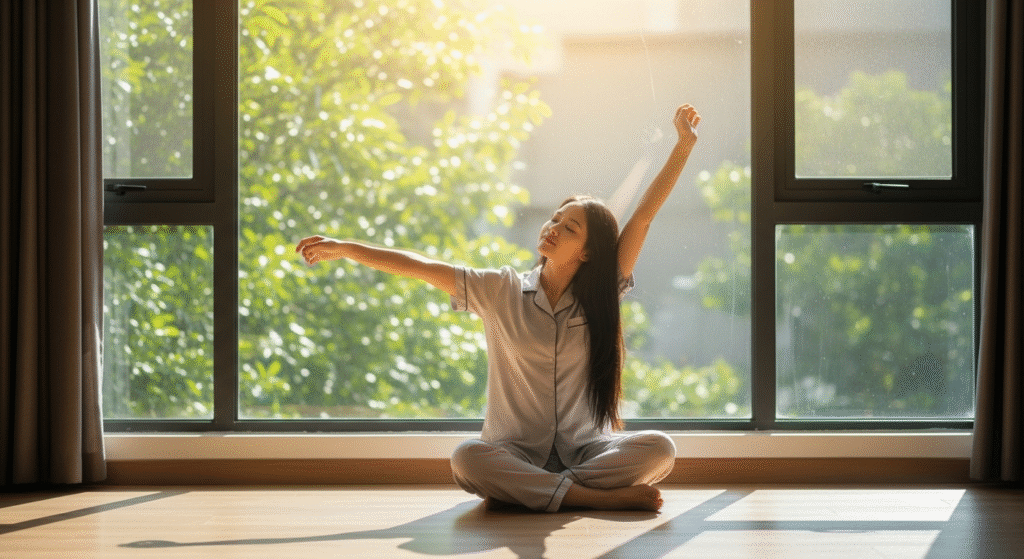
Looking for more eco-friendly wellness tips? Check out our other posts on Grounding Sheets and Sleep Bonnets and Holistic Bedtime Routines for Better Health for more ways to live healthier while helping the environment.

